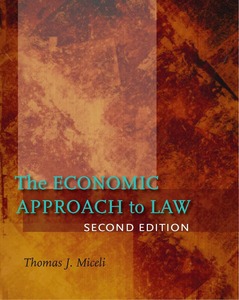Chapter 1
Introduction
Key Points
• Law and economics is concerned with how law creates incentives for people to behave in certain socially desirable ways.
• Positive analysis describes the way that people actually respond to certain laws. A stronger form of positive analysis asserts that the common law has actually evolved, with or without conscious planning, to reflect an economic logic.
• Normative analysis prescribes how the law can be changed to become more efficient.
• Normative analysis presumes that efficiency is a valid norm for evaluating law. It is, however, only one of many competing norms that can be so used.
• Pareto efficiency is the most common measure of efficiency in economics, but it is of limited practical use because it does not permit a comparison of changes that produce both gainers and losers. Kaldor-Hicks efficiency (or potential Pareto optimality) addresses this shortcoming by defining as efficient any change that yields greater aggregate gains than losses. In this sense, Kaldor-Hicks efficiency is equivalent to wealth maximization, or cost-benefit analysis.
• The Coase Theorem states that the efficient allocation of resources will be achieved in the presence of externalities provided that all affected parties can negotiate with each other at low cost.
• The Coase Theorem has important implications for the economic analysis of law because it illustrates the importance of transaction costs in determining when the law matters for efficiency. The resulting interplay between markets and law as alternative mechanisms for allocating resources represents a recurring theme throughout the book.
• The “law” in law and economics usually refers to the common law, by which we mean the legal precedents that emerge from judicial decisions. The undirected nature of this body of law lends itself to economic analysis because it has certain “market-like” properties.
